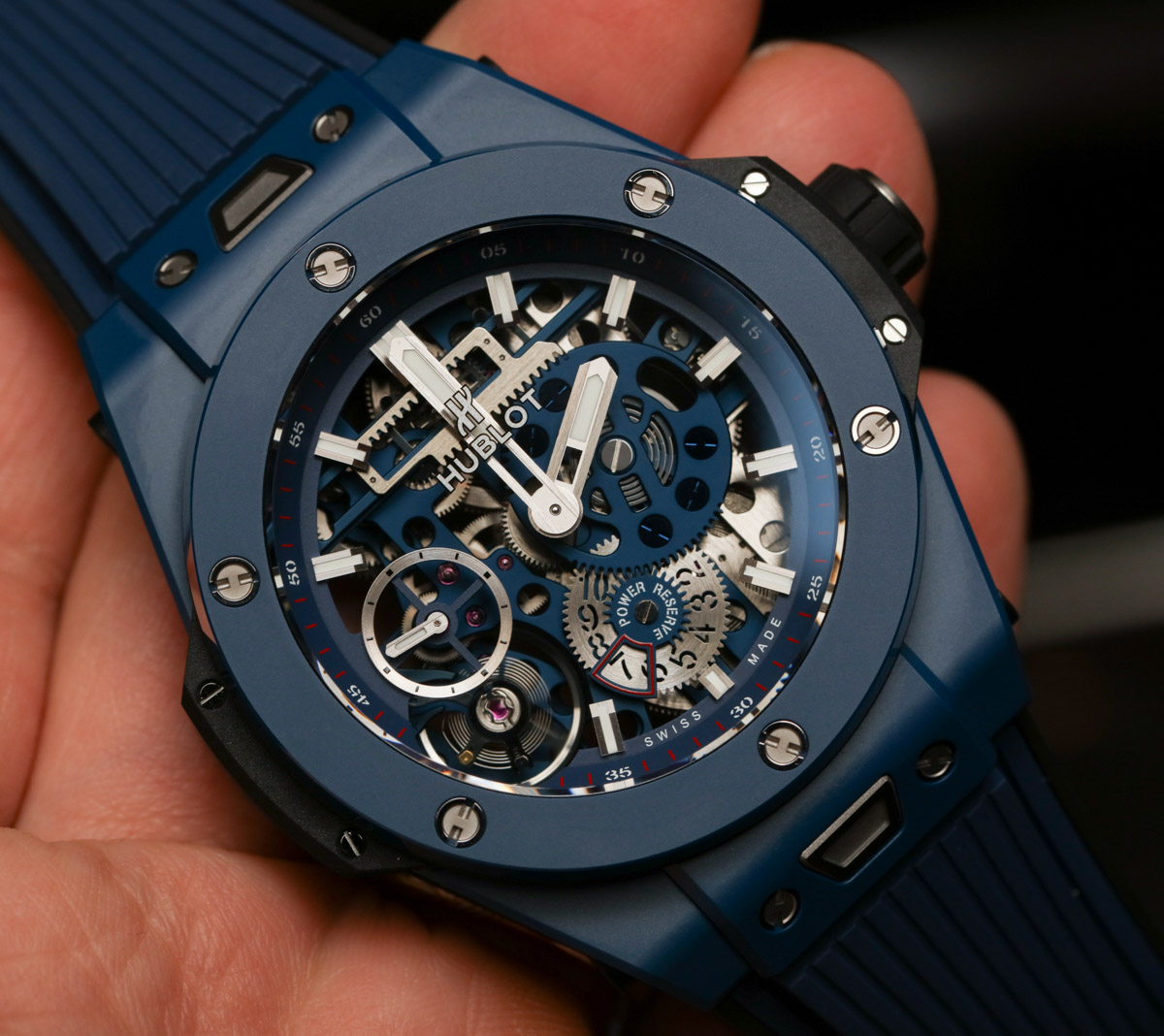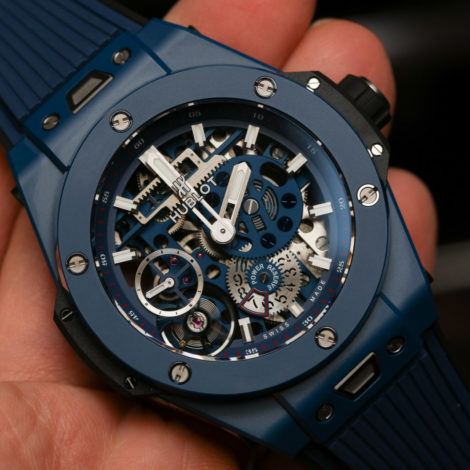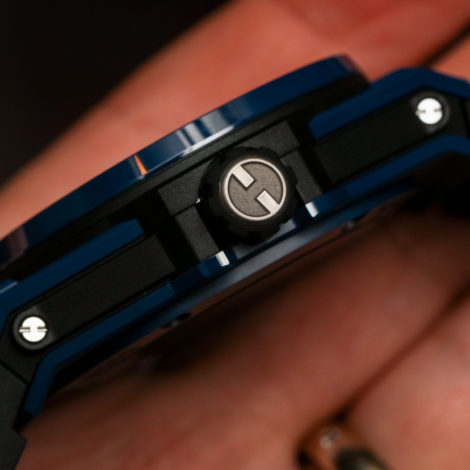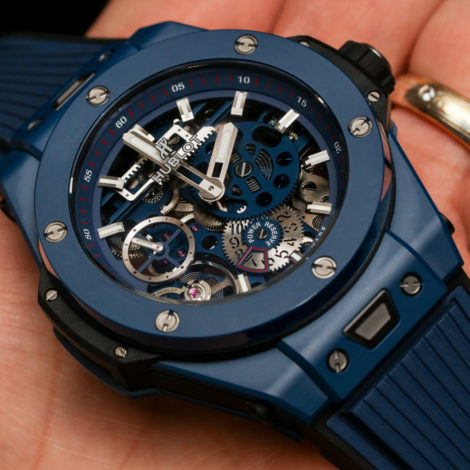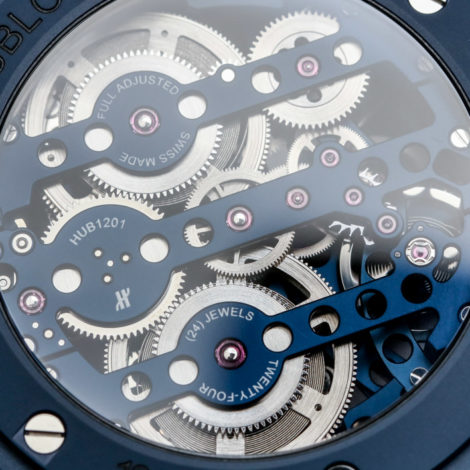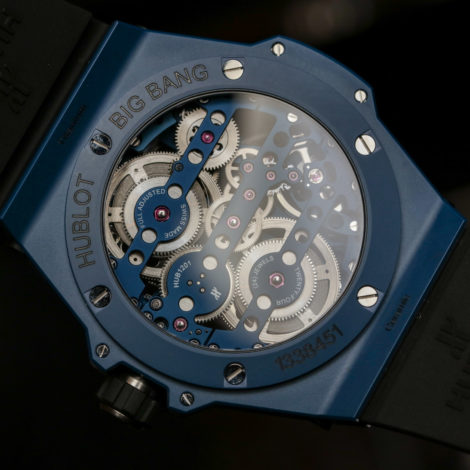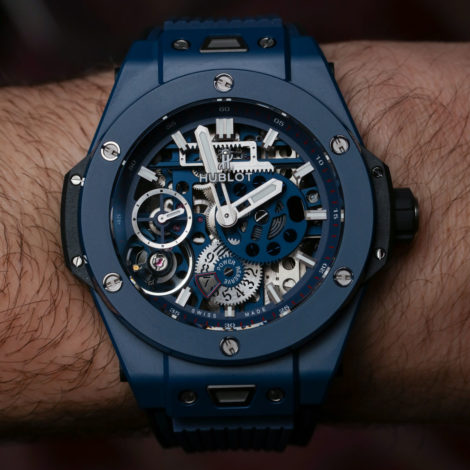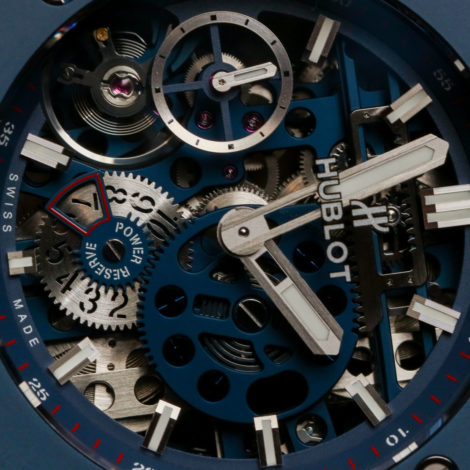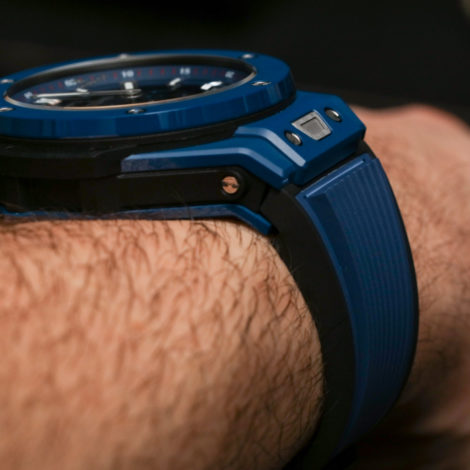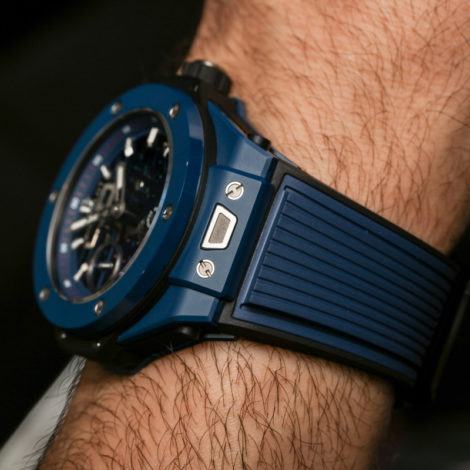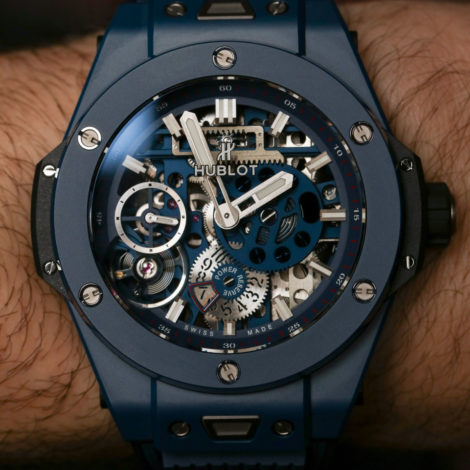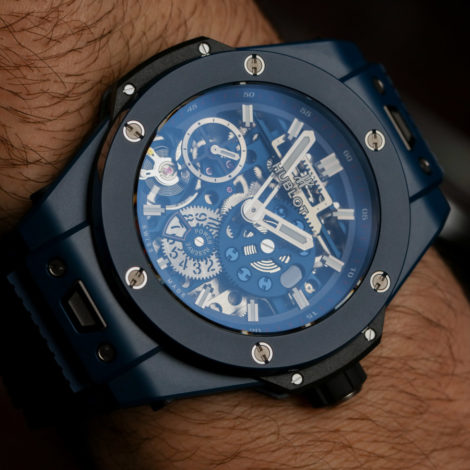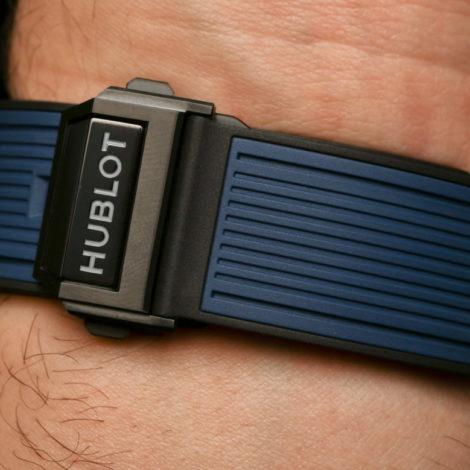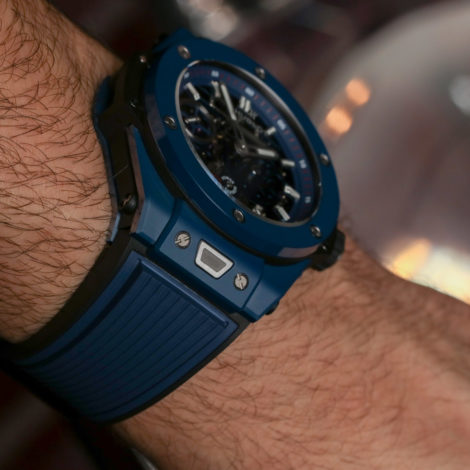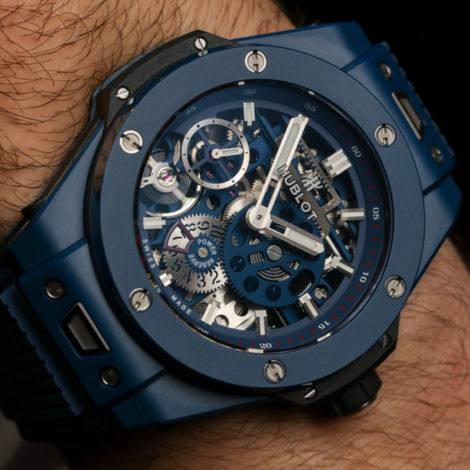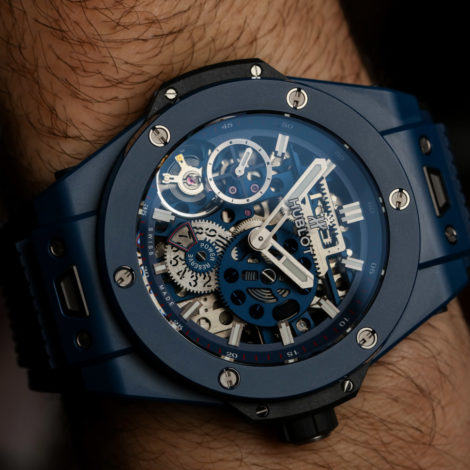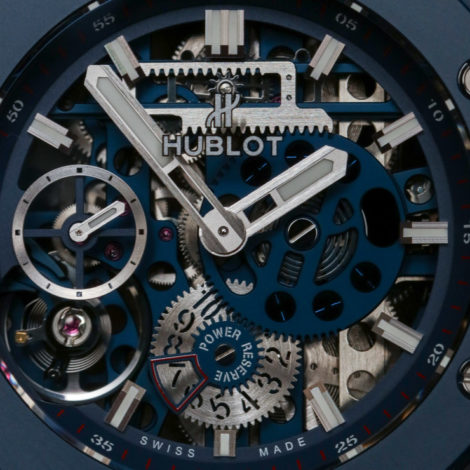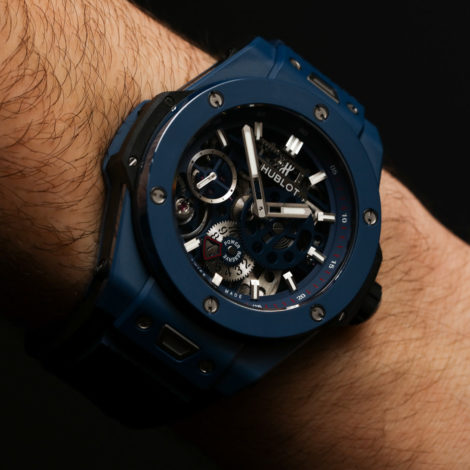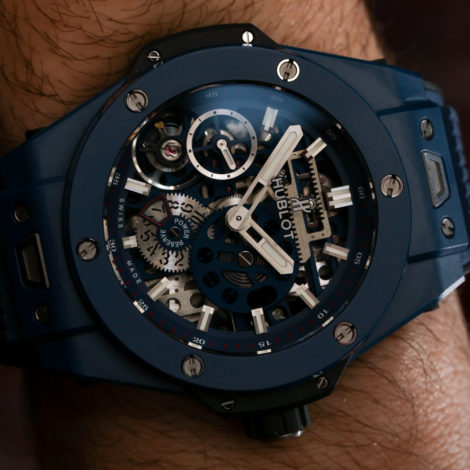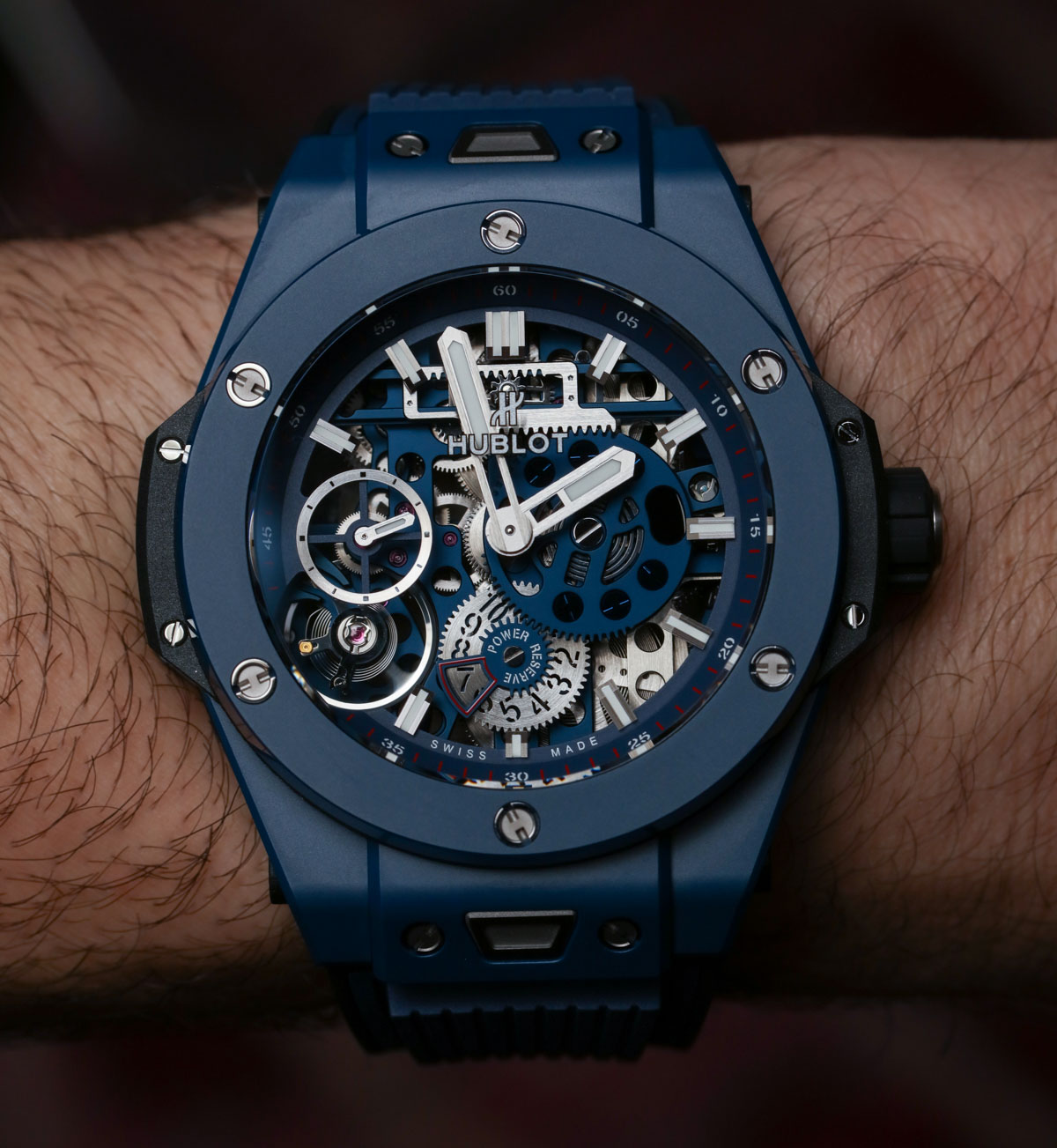
During “Geneva Watch Week” in January of 2018, I met with Hublot to see this new blue ceramic version of the Big Bang Meca-10 watch (hands-on here featuring the collection’s original 2016 release). This is one of the more interesting “watch collector” oriented versions of the Big Bang currently offered today, and writing about it gives me an opportunity to share an interesting story about the Hublot Meca-10 collection.
A few months ago I found myself with some time to kill while visiting the Hublot manufacture in Nyon, Switzerland. I asked “can I go talk to someone making something interesting?” Hublot’s busy team thought about it, made a call, and then asked me to wait for someone to pick me up. Within 10 minutes I was sitting next to a friendly guy with “movement constructor” in his job title. Brands typically don’t like their valued engineers talked about in media because it can often lead to “talent poaching,” so I’ll not mention this guy’s name, but if you end-up reading this, thank you for your time chatting with me instead of working on movements.
Hublot, is one of the few watch brands today who actually imagine and design new movements to produce all the time from both a practical and artistic perspective. Hublot’s movement design office has bookcases filled with folders dedicated to the schematics of the various movements they’ve designed and produced over the years. Some are the volume-intended UNICO automatic chronographs, and some are the more enthusiast-oriented movements such as the caliber HUB1201 that sits in the Big Bang Meca-10 watches. I spent over 30 minutes listening to someone speak with such enthusiasm about what he designed into the HUB1201 and what his philosophy was in imagining this mechanism. I was regretful that not everyone who is sympathetic to the design and originality of this product could hear this heartfelt, off-the-cuff presentation about the product of one’s own labor.
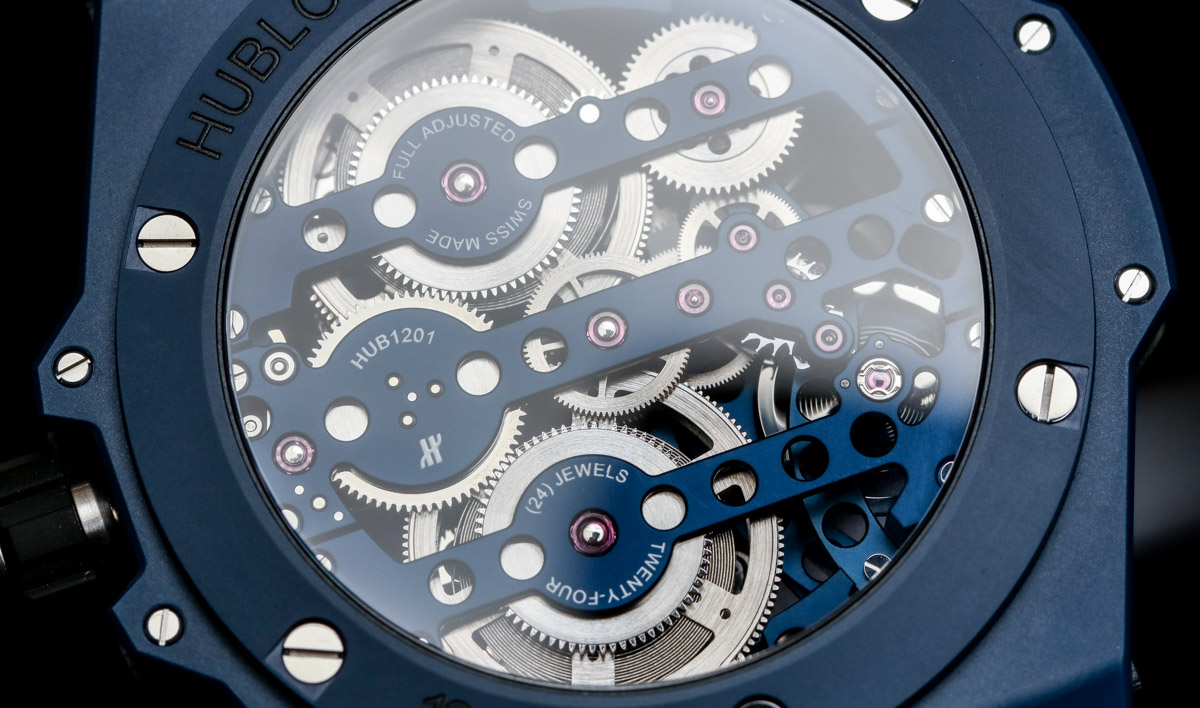
For what its worth, Hublot makes an attempt to share the fact that this is a watch with a movement designed to be original, and cool looking when writing: “The mechanics of the Big Bang Meca-10 Blue Ceramic are as innovative as the materials comprising them. Developed over a span of two years, its manually-wound skeleton calibre, with a 10-day power reserve, contains 223 parts. A testament to beauty and technical expertise, it has two barrels parallel to the power reserve indicator: a cogwheel system with two rakes sliding along a horizontal axis. Accentuating this mechanical architecture, an opening at 3 o’clock unveils a red dot when the movement is nearing the final days of its power reserve, while a gearwheel at 6 o’clock indicates the exact number of days remaining and the regulating organ, coupled with the small second regulator, appears at 7 o’clock.”
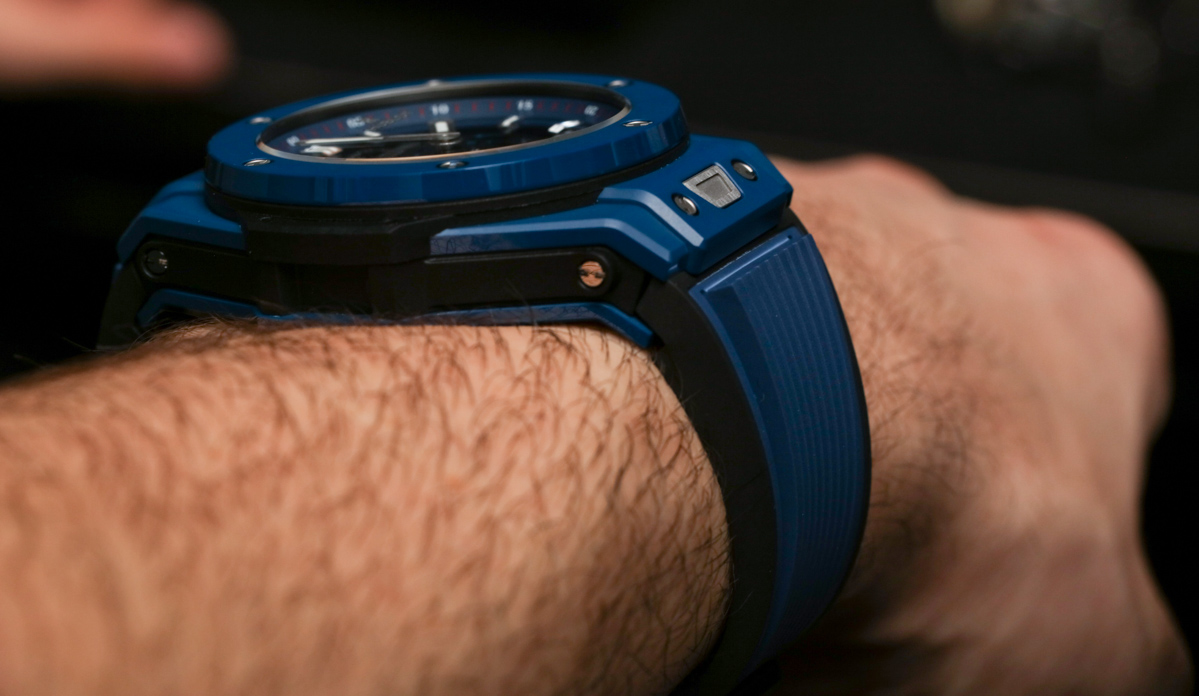
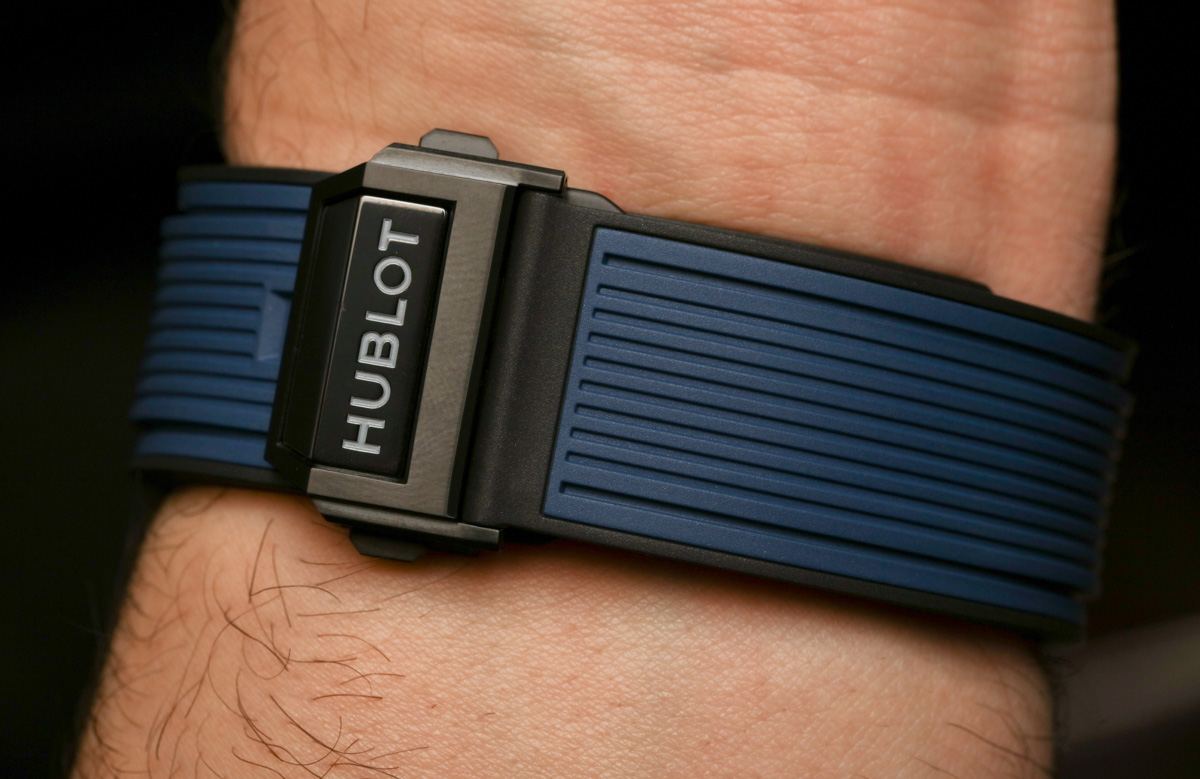
Most consumers will not read the brand’s own press release – and if they see the Meca-10 watch in person will perhaps not be aware that the movement is designed to be an artistically expressive mechanical sculpture (that tells the time). The 10-day power reserve is a performance promise which helps situate the movement as being high-end, but for me the real appeal is in the shape of the parts and the visual presentation of the open-worked movement. Hublot is celebrating industrial design with shapes and elements not normally found in a traditional watch movement. The large power-reserve cog wheel, as well as the linear moving gear that moves it are good examples of these elements. It was a pleasure to hear the designer mention how he wanted to delight people viewing the movement, and offer a high degree of performance so that the HUB1201 was impressive on paper. To me this is what many watch collectors are looking for (or should be), and Hublot is among those brands where they can find it.
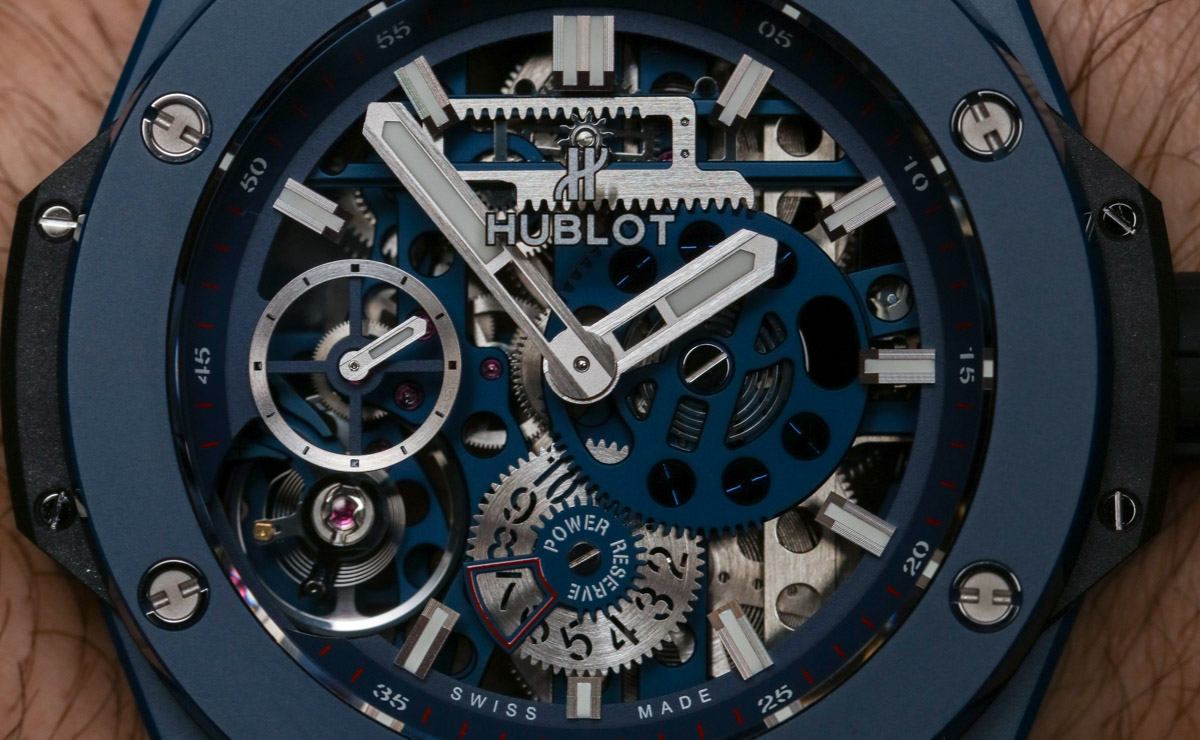
Operating at 3Hz (21,600 bph), the HUB1201 has a full 10 days of power reserve with a cool indicator on the dial. The manually-would movement indicates just the time with a subsidiary seconds dial at 9 o’clock. The movement does double duty as the engine inside of the watch as well as the dial presentation for wearers (and their audience). Legibility is remarkably cool via the use of large hands and hour markers, as well as effective surfacing treatments on those elements.

At 45mm wide and 15.95mm thick (water-resistant to 100m), the Meca-10 exists in the standard modern generation Big Bang case. Part of me wants this movement to have its own case, but I’m more than OK with it borrowing the Big Bang personality as a frame for the mechanism. Hublot currently offers the Big Bang Meca-10 in a range of styles including black ceramic, titanium, magic gold, king gold, and now blue ceramic as the reference 414.EX.5123.RX. Blue continues to be a hot seller in the luxury watch space, so expect to see a lot more of this hue from Hublot and pretty much all other watch brands for the next few years. Blue ceramic is still a relatively uncommon color for ceramic watches, so there is a distinct novelty value in a watch like this right now.
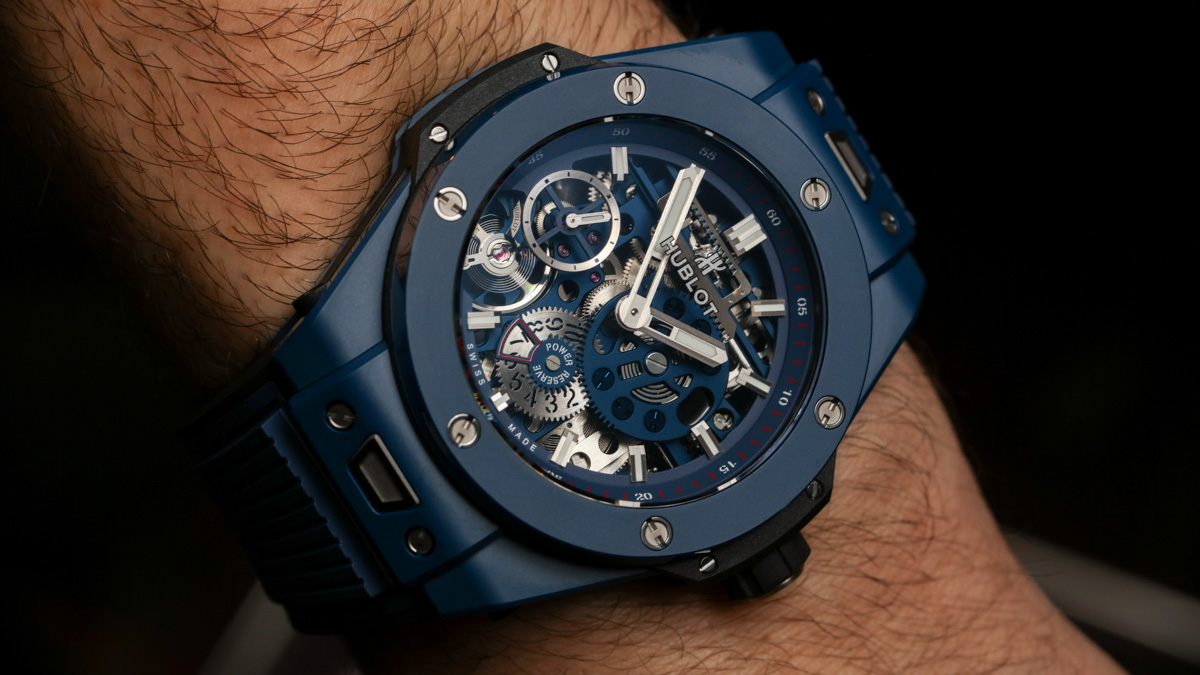
On the wrist the statement this watch makes to me is quite simple and straightforward. This is for watch collectors fond of modern, masculine designs, as well as for people who appreciate the art of mechanical movements rendered to be visually engaging and assertive. You do need a high level of personal confidence and taste security to wear something like this, which is only to say that most people getting a Hublot Big Bang Meca-10 aren’t exactly watch collecting beginners. These watches are accordingly not cheap either, but you get a very comprehensive “in-house package” here, so I wouldn’t consider them overpriced either. This Hublot Big Bang Meca-10 Blue Ceramic 414.EX.5123.RX has a retail price of $22,000 USD. hublot.com

